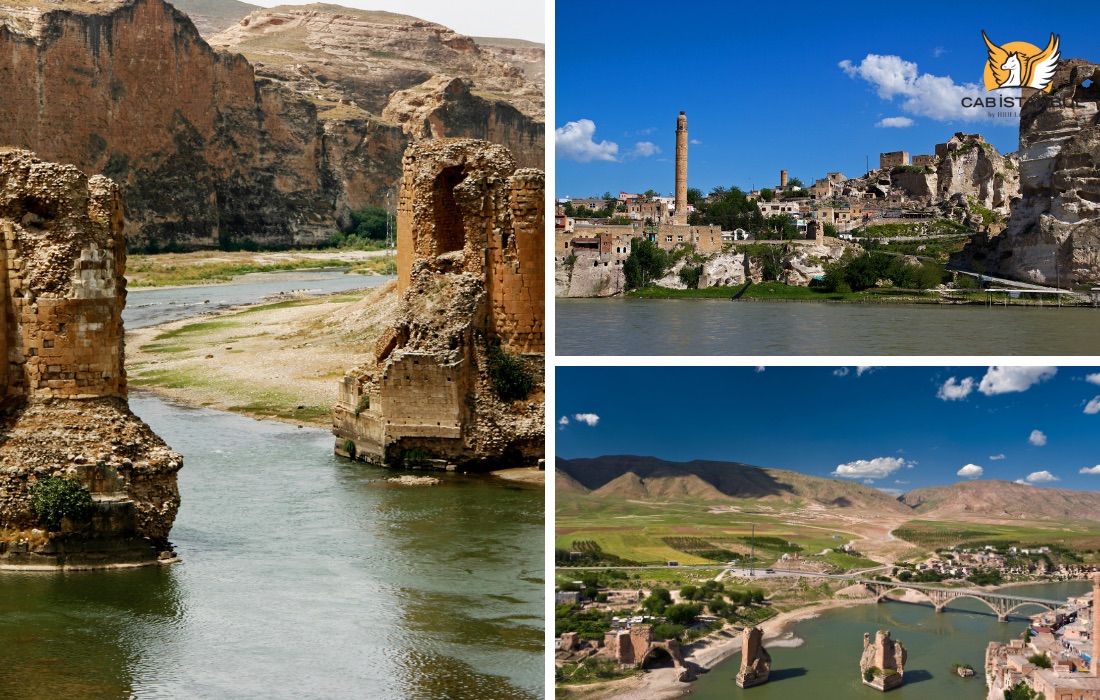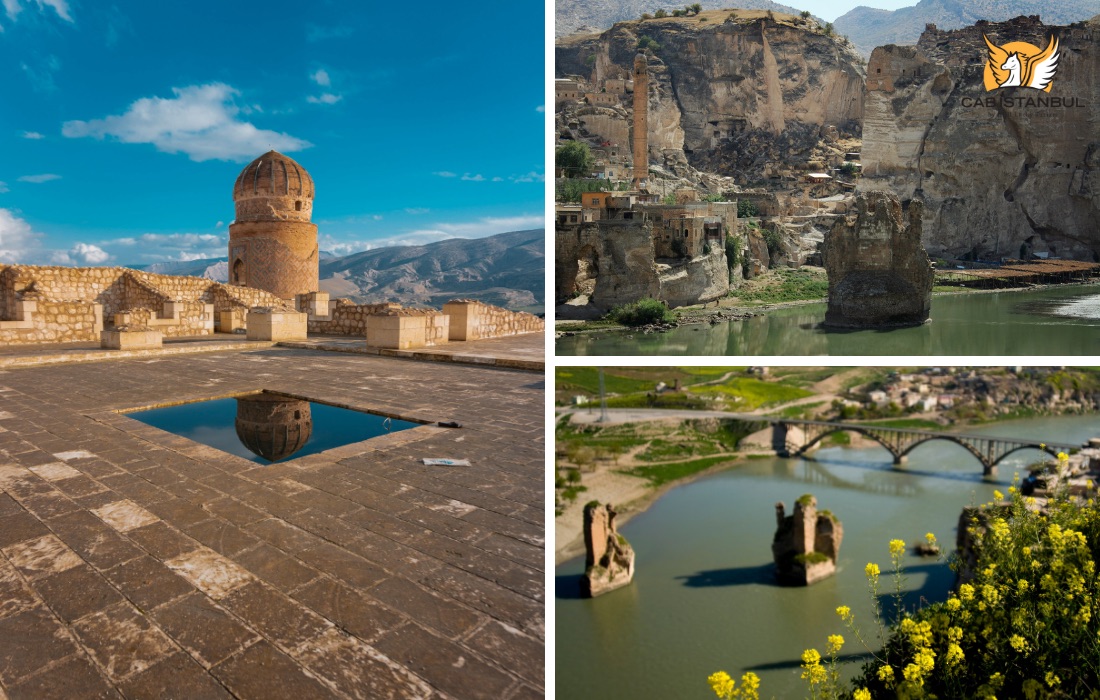Things to Do in Hasankeyf Batman/Turkey
2025-12-06

Hasankeyf-Batman/Turkey
Tucked along the banks of the Tigris River, Hasankeyf is a living testament to 12,000 years of uninterrupted human civilization. Once a vibrant hub bridging Mesopotamia and Anatolia, this ancient city invites travelers to step into a world shaped by Romans, Byzantines, Artuqids, Ayyubids, and Ottomans. For history enthusiasts searching for things to do in Hasankeyf, the city’s layered past offers a breathtaking narrative of conquest, faith, architecture, and resilience.
The towering Hasankeyf Castle, built by Emperor Constantius II in 363 AD, dominates the landscape, while Zeynel Bey Mausoleum, a cylindrical marvel from the Akkoyunlu dynasty, captivates visitors with its Seljuk-inspired tilework. Although much of the original town is now submerged under the Ilisu Dam, key monuments such as the Artuqid Bathhouse, Imam Abdullah Shrine, and Ulu Mosque have been meticulously relocated to the new Hasankeyf Cultural Park, preserving the city's historical essence.
One of the most compelling things to do in Hasankeyf is to explore the thousands of limestone caves etched into its cliffs—remnants of a once-thriving cave-city lifestyle that gave the town its ancient name “City of Rocks.” For those intrigued by Islamic science, the legacy of Al-Jazari, the father of robotics, who lived and invented in Hasankeyf, adds a remarkable layer of cultural depth.
Despite modern changes, Hasankeyf gezilecek yerler still inspire awe. Boat tours on the dam lake offer scenic views of canyon cliffs and the remnants of the medieval bridge, while hiking trails through natural gorges combine history with outdoor adventure.
Whether you're seeking cultural immersion, spiritual tranquility, or architectural wonders, things to do in Hasankeyf promise a rare fusion of the ancient and the enduring.
Enhance your visit to Hasankeyf with our premium İstanbul transfers and chauffeur-driven car rental services from İstanbul. Enjoy door-to-door comfort and expert local guidance for a seamless journey through history.
Hasankey-Batman
Hasankeyf History
Origins of Hasankeyf: Neolithic Foundations (c. 10,000 BCE)
Although there is no single “founder” of Hasankeyf in the traditional sense, archaeological evidence suggests that the area has been inhabited since the Neolithic Age, around 10,000 BCE. Early settlers were drawn to the region due to its fertile riverbanks and natural cave systems along the Tigris River, which offered shelter and a strategic location. These early communities laid the groundwork for continuous habitation, making Hasankeyf one of the oldest known settlements in the world.
Roman Strategic Settlement (2nd–3rd Century CE)
The first significant urbanization of Hasankeyf is attributed to the Romans in the 2nd or 3rd century CE. Positioned on the frontier between the Roman Empire and the Persian Sassanids, the city was developed as a military and administrative post. Its original Latin name is unknown, but the settlement grew around the construction of a fortress and bridge, serving as a defensive outpost to monitor and control movements between Mesopotamia and Anatolia.
Byzantine Fortification and Religious Center (4th Century CE)
In 363 CE, Hasankeyf (then known by its Syriac name Cepha, meaning “rock”) gained prominence under the Byzantine Emperor Constantius II, who ordered the construction of a massive fortress to protect the region from Persian advances. Under Byzantine rule, it also became a religious center, housing a Syriac bishopric. The city's elevated cliffs and natural caves made it ideal for defense and religious seclusion.
Islamic Conquest and Cultural Transformation (639 CE)
The Muslim conquest of Hasankeyf occurred in 639 CE during the expansion of the Rashidun Caliphate, under the leadership of Iyad ibn Ghanm. The city was integrated into the Islamic world and saw a transformation in its cultural, religious, and architectural identity. New structures such as mosques, madrasas, and bazaars emerged, repurposing Hasankeyf as a cultural and trade center along key caravan routes.
Artuqid Renaissance: Hasankeyf as a Capital (1102–1232)
The Artuqid dynasty, a Turkmen principality, turned Hasankeyf into a regional powerhouse. In 1102, Sökmen Bey, a commander under the Great Seljuks, captured the city and made it the capital of the Hasankeyf branch of the Artuqids. This era is considered the city’s golden age. The Artuqids commissioned the construction of iconic structures such as the Old Bridge over the Tigris, Ulu Mosque, and Artuqid Palace, transforming Hasankeyf into a center of science, technology, architecture, and governance.
Ayyubid and Later Dynasties: Religious and Strategic Hub
In 1232, the city was taken by al-Malik al-Kamil, an Ayyubid sultan. The Ayyubids focused on urban planning, religious institutions, and public baths, further enhancing the city’s prestige. The famous Zeynel Bey Mausoleum, built during the Akkoyunlu era, also symbolized the city's ongoing importance as a spiritual and political hub. Later, Hasankeyf would pass under Safavid and Ottoman control, maintaining its significance as a district and tribal center well into the 19th century.
--Hasankeyf was shaped by successive civilizations—each leveraging its strategic location along the Tigris River. From a Neolithic settlement to a Roman fortress, Byzantine religious post, Islamic cultural beacon, and Artuqid capital, Hasankeyf was always founded or re-founded with purpose—whether military, spiritual, commercial, or scientific.
Zeynel Bey Tomb

Hasankeyf Castle
The Heart of Defense and Power-Perched on a steep cliff above the Tigris, the Hasankeyf Fortress was constructed in 363 CE by Byzantine Emperor Constantius II. It served as a key defensive bastion through successive empires. Later expanded by the Artuqids and Ayyubids, the castle contained barracks, royal quarters, and a secret passage leading down to the river. Today, it stands as a testament to Hasankeyf’s strategic and political significance throughout history.
The Rock-Cut Caves
A 12,000-Year-Old Urban Legacy, The most iconic feature of Hasankeyf is its thousands of rock-cut dwellings and man-made caves, carved into the limestone cliffs overlooking the Tigris River. Dating back to the Neolithic Age, these caves were once homes, shops, places of worship, and even schools. Used continuously for millennia—by Romans, Byzantines, and Muslims—they earned Hasankeyf the ancient nickname “City of Caves.” Though many are now submerged, they remain a symbol of the city's uninterrupted urban life.
Zeynel Bey Mausoleum
A Symbol of Timurid Influence-Built in the 15th century for the son of Akkoyunlu ruler Uzun Hasan, the Zeynel Bey Tomb is unique in Anatolia. Its cylindrical, domed structure is adorned with glazed turquoise and navy tiles—clearly influenced by Timurid architecture from Central Asia. Originally near the riverbank, the tomb was relocated to the new Cultural Park to protect it from flooding. It remains one of the most recognized architectural symbols of Hasankeyf.
The Great Mosque (Ulu Cami)
A Center of Spiritual Life-Constructed during the Ayyubid rule in the 14th century, the Ulu Cami was Hasankeyf’s primary mosque. With its carved wooden doors and finely detailed mihrab, the mosque reflects the city’s blend of Islamic spiritual life and local artistic expression. Though now relocated, it continues to function as both a religious and cultural monument in the new cultural complex.
The Artuqid Bridge
An Engineering Marvel of the 12th Century-Built by the Artuqids in the 1100s, the Hasankeyf Bridge was once the largest bridge in the Islamic world. Its central span measured over 40 meters and may have been retractable—a groundbreaking design for its time. The bridge connected east-west trade routes and symbolized the city’s economic power. Though mostly in ruins and submerged today, its stone piers still evoke admiration.
Artuqid Bathhouse
Refined Urban Culture-Dating to the 12th century, the Artuqid Hammam reflects the era’s refined urban lifestyle. Built with separate sections for men and women, it served as a public gathering space and hygiene center. It was one of the first structures moved to the Cultural Park. The bathhouse's architecture—domed ceilings, marble slabs, and terracotta water systems—demonstrates the blend of comfort and utility in medieval Hasankeyf.
Imam Abdullah Shrine
Sacred Heritage-This revered tomb honors Imam Abdullah, a companion of Prophet Muhammad’s grandson who was martyred during the Islamic conquest of the region. Originally situated near the Tigris, it was among the first heritage sites relocated before the flooding. The shrine has long been a place of local pilgrimage and remains spiritually significant for many visitors.
Al-Jazari's Legacy
Cradle of Islamic Science and Technology-Hasankeyf was home to Badi al-Zaman al-Jazari, the 12th-century polymath considered the father of robotics and automation. Serving in the Artuqid court, he designed advanced water clocks, mechanical devices, and automated systems far ahead of his time. His inventions influenced engineering in both the Islamic world and Renaissance Europe. His scientific legacy makes Hasankeyf a lesser-known, yet vital, node in global technological history.
Medreses and Knowledge Centers
Intellectual Life of Hasankeyf-During the Artuqid and Ayyubid periods, Hasankeyf became a hub for Islamic education, with several medreses (Islamic schools) producing scholars in theology, astronomy, and medicine. Though their physical remnants are limited, their intellectual contributions helped position the city as an academic beacon in Upper Mesopotamia.
Traditional Handicrafts and Local Lore
Though less visible today, Hasankeyf once thrived with traditional artisans producing textiles, copperware, and wood carvings. Folk tales passed through generations describe the mystical powers of its caves, the wisdom of its scholars, and the piety of its saints. This intangible cultural heritage continues through oral history and community memory.
